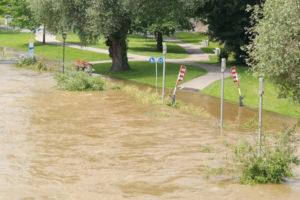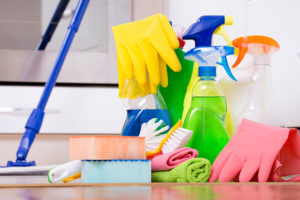
Recovering from a hurricane or flood is exhausting work. Once the water level goes down and you are able to re-enter your home, you begin a race against time and your energy to salvage and fix what you can. Unfortunately, you are also racing against the growth of mold in your home after a flood as well. Mold can grow and spread quickly in a wet or damp environment but with fast action you can help prevent or hinder the growth in your home. Mold after a flood can affect not only your home but also your health so it is important to take measures to prevent it so you have one less thing to worry about.
Take Preventative Measures to Avoid Mold After a Flood
Remove Flood Water
Since some of your success to prevent mold depends on how long water sits in your home or office before you are able to re-enter, removing the water in your home as quickly as possible will be your crucial first step. You’ll need to soak-up or vacuum-out any standing water. If water is high in places where electrical equipment or electrical circuitry is present, extreme precaution is needed. It is best to call in emergency response workers to clear the area with electrical complications before you work on removing the water.
Dry Out Your Materials
Drying out your home, possessions, and materials will be your next important step. Opening windows and using fans and dehumidifiers will promote air circulation and drying. Because mold thrives in damp environments, drying out affected materials or removing them from your property is crucial to prevent the growth or spreading of mold. Removing damp material includes possessions such as books and other paper material as well as structural items such as drywall, baseboards, and flooring. If you are removing the material yourself, be sure to document everything with pictures and an official time stamp if possible to ensure aid from the government or compensation from your insurance company. Get in contact with your insurance company as well because they may have a specific process you need to follow to ensure compensation.
Disinfect the Areas
Once your home or office is dry, disinfecting the areas that were wet can help prevent the growth of mold. Killing bacteria on wood, furniture, drywall, and other materials that were sitting in flood water will help remove the food source mold requires to grow.
Call a Professional
Professional mold remediation companies are licensed and experienced in removing and preventing mold after a flood. They have special equipment, processes, and techniques to safely remove hazardous materials that are unsalvageable and clean and restore structural material that can be salvaged. Calling a professional directly after a flood will increase the likelihood of preventing the growth of mold in your home. Floodwater can contain hazardous material from sewage backup and overflowing water containment areas and is best handled by a professional who is trained and equipped to deal with the health hazard.
After a flood or natural disaster affects your home or office, be sure to take precaution when cleaning and handling your home or office cleanup. Stay vigilant for signs of mold and if you see mold in your home or office call a professional immediately for remediation assistance and to reduce the negative health impact on you and your loved ones.



